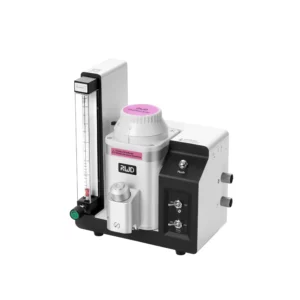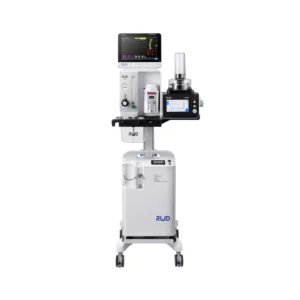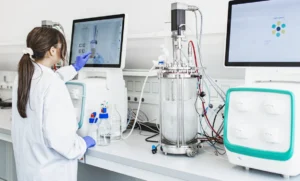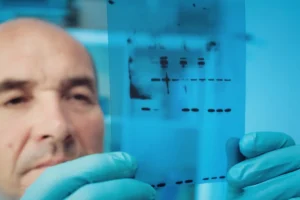Inhalation anesthesia from RWD is widely used in veterinary medicine due to its effectiveness and safety for animals. However, if the anesthesia equipment is not properly configured or maintained, or if waste anesthetic gases (WAGs) are not safely scavenged, these gases can escape into the clinical environment—posing serious health risks to veterinary and medical staff.
Common Sources of Waste Anesthetic Gases
- Poorly fitting facemasks
- Spills of liquid anesthetics during handling
- Obstructions in the Adjustable Pressure Limiting (APL) valve
- Leaks from improperly sized endotracheal tubes
- Cracks or loose fittings in hoses, breathing systems, and machines
- Overloaded or saturated waste gas canisters
Health Risks for Clinical Staff
Exposure to waste anesthetic gases depends on drug concentration, exposure time, and ventilation quality. Short-term symptoms may include dizziness, nausea, headaches, fatigue, and irritability. In contrast, prolonged exposure has been linked to more serious outcomes such as infertility, spontaneous abortion, congenital anomalies, liver and kidney damage, and even cancer.
Furthermore, studies suggest that chronic exposure to anesthetics may impact cognitive function and memory. Animal research also points to a potential link between anesthetic gases and Alzheimer’s disease, due to increased amyloid-beta toxicity and proinflammatory cytokine activity.
Note: According to OSHA, occupational exposure to halogenated anesthetics should not exceed 2 ppm over one hour—or 0.5 ppm when used with nitrous oxide.
Environmental Impact of Anesthetic Gases
Inhaled anesthetics such as isoflurane and sevoflurane are potent greenhouse gases. Isoflurane, for instance, has a global warming potential 1,230 times greater than CO₂. When released directly into the atmosphere, these gases contribute significantly to ozone depletion and climate change.
How to Minimize Exposure and Emissions
- Install high-efficiency waste gas scavenging systems
- Always turn off vaporizers and gas flow meters after use
- Use properly fitted facemasks or endotracheal tubes
- Utilize vaporizer adapters instead of open administration methods
- Ensure proper ventilation and air exchange in operating rooms
- Conduct regular leak checks on anesthesia machines and hoses
- Follow strict anesthesia protocols and consider multimodal approaches to reduce inhalant use
Recommended Waste Gas Emission Practices
Unlike human hospitals, veterinary facilities often lack central HVAC systems that can safely dilute and exhaust anesthetic gases. As a result, two common solutions are used:
- Direct Emission Systems: Gases are vented outside via a wall-mounted exhaust port. Not recommended due to the risk of leaks, environmental pollution, and system damage.
- Activated Carbon Filter Canisters: Highly recommended. These mobile, reusable filters safely absorb anesthetic gases without interfering with system pressure.
Advantages of Waste Gas Filter Canisters:
- Completely absorb waste gases
- Environmentally safe and portable
- Do not affect the anesthesia system’s pressure release
- Easy to integrate into most veterinary anesthesia setups
Tip: Always replace filter canisters as per the manufacturer’s guidelines to avoid over-saturation and ensure consistent performance.
Avoid These Common Pitfalls
- Isoflurane/sevoflurane are denser than air and can accumulate even with direct venting
- Connecting the APL valve directly to external pipes may lead to backflow, moisture buildup, and blockages
- Increased system pressure can cause overinflated lungs, risking rupture if unnoticed
- APL valve failure can be costly and complex to repair
- Fixed pipelines limit mobility and increase maintenance complexity
Choosing the Right Waste Gas Scavenging System Matters
Selecting the right waste anesthetic gas scavenging system is essential for protecting medical personnel, animals, and the environment. Whether you’re equipping a veterinary clinic, research facility, or teaching hospital, it’s important to evaluate system compatibility, filtration efficiency, and ease of installation. Proper gas management reduces occupational exposure risks, ensures regulatory compliance, and enhances environmental responsibility.
Ultimately, protecting your staff, patients, and environment from anesthetic gas exposure begins with the right equipment. Apex Scientific offers expert advice and premium solutions designed for veterinary clinics and research labs in South Africa. Reach out to us today to find a compliant, effective waste anesthetic gas management system that suits your workflow and safety needs.





